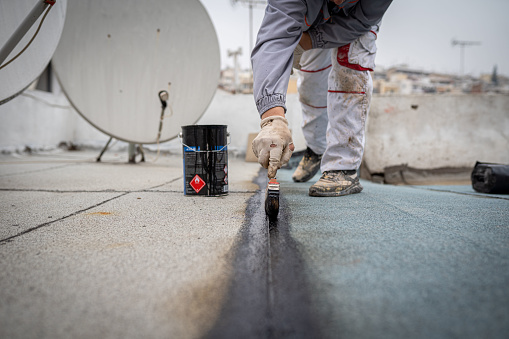Basement Waterproofing Tips

Basement waterproofing is an important way to protect your home from water damage. When done properly, it can save your belongings from mold and mildew and help keep your basement safe from floods.
Exterior Methods
The most common basement waterproofing method involves excavating around the foundation to the footer of the house (approximately 6 to 8 feet down). This provides access for repairing cracks and installing a drain tile or a waterproof membrane. It also allows for installation of a sump pump and slope or a sub-floor drainage system.
Interior Methods
A more affordable and less invasive basement waterproofing method involves adding interior drain tiles or pipes. These are placed in a gravel base to capture water that collects outside the walls. This prevents water from accumulating on the floor and causing serious damage to the foundation. See basement waterproofing website today!
Oftentimes, basement water issues are caused by improper drainage systems. Clogged gutters and drains, as well as soil that is not grading properly can lead to problems.
If you have a basement that has been neglected or is in need of repair, you should schedule a professional inspection to determine the cause and recommend a solution. This will save you time and money in the long run by preventing further damage from occurring. Look for more facts about renovations at https://en.wikipedia.org/wiki/Home_improvement.
When searching for a basement waterproofing company, make sure to get quotes from several companies. Ask about their guarantee and financing options. This will ensure that you find a reputable company who can do the job right.
You should also check for online reviews. This will give you an idea of what other customers think about a particular contractor.
Basement Waterproofing Tips
One of the best ways to determine whether your basement needs waterproofing is to walk around it and see if there are any stains or signs of moisture. This will allow you to determine if the problem is due to groundwater or some other source.
Puddles on the floor, damp spots or a white chalky substance on the walls, cracking or bowing walls and peeling paint are all signs of potential water infiltration problems. If you notice any of these, contact a professional immediately to assess the damage and provide a cost-effective solution.
Water Stains
If you notice occasional stains that look like outlines, it's an indication that water is seeping through cracks in the basement walls or floor. These stains are usually brown or yellow in color and can range in size from a few inches to several feet.
They can be caused by spilled items, a washing machine overflow or by the presence of water seeping through cracks in your basement walls. If any of these are found, take a picture and show it to your contractor.
The most effective waterproofing basement in vaughan methods for your basement depend on a number of factors, including the amount of rain in your area, the condition of the soil, and the amount of water that accumulates on the foundation. In addition to determining which type of waterproofing is appropriate for your home, you should also consider the cost of the project and how long it will take to complete.
